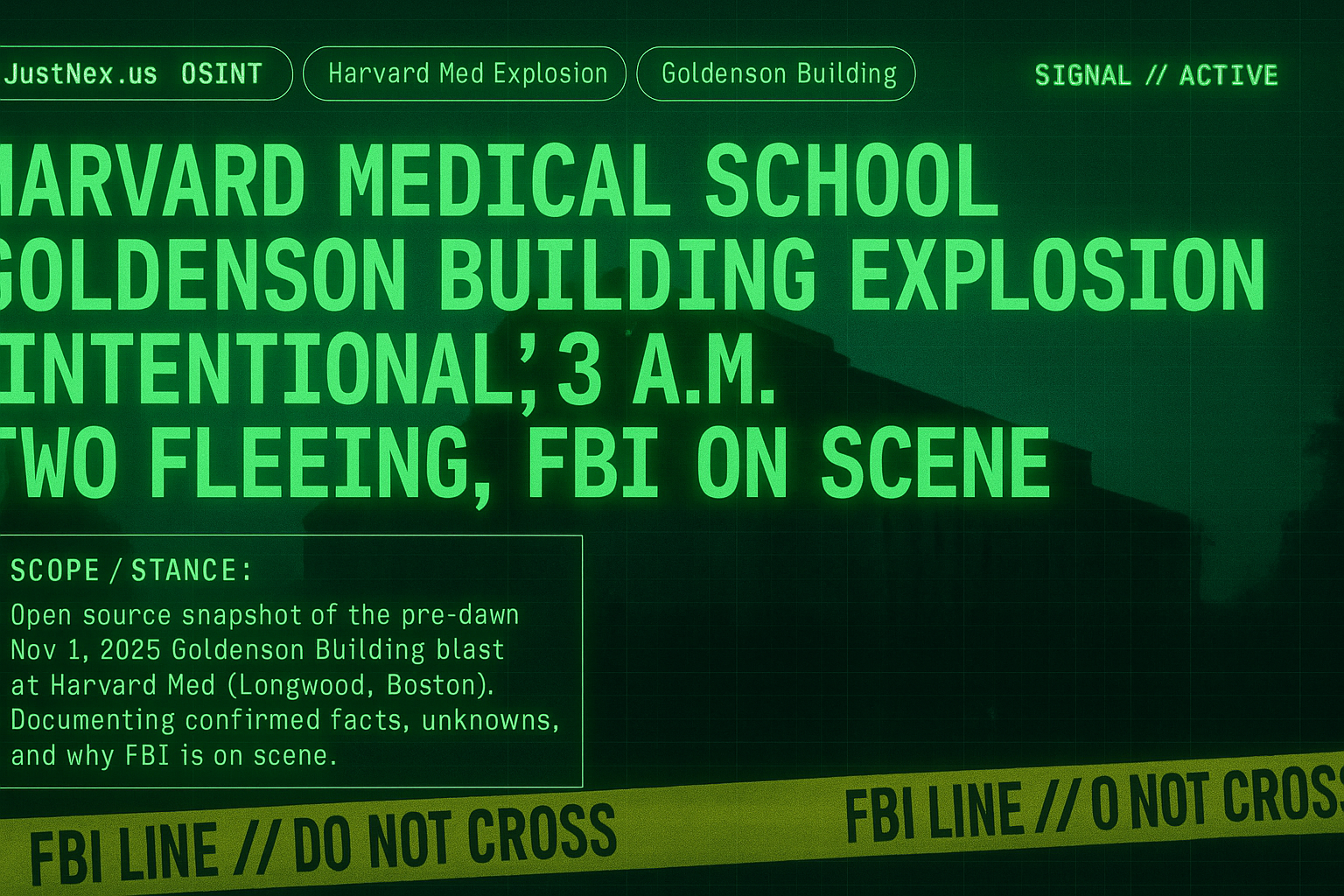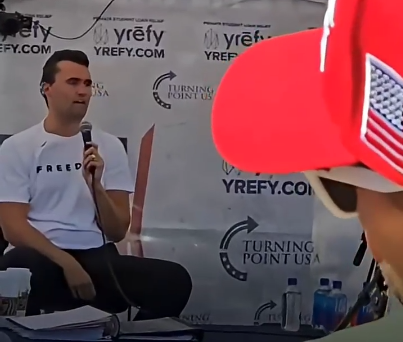Operation Clarity — The Katie Miller Broadcast & The Information War Front
Scope / stance (disclosed up front): This is an open source intelligence brief analyzing a specific information warfare event. OSINT confirms a significant rhetorical escalation by a political actor, revealing strategy and intent. The analysis focuses on the informational impact, not physical action.
Status right now: The information landscape is highly volatile. The public meltdown of Katie Miller on a live broadcast, coupled with the confirmed relocation of key Trump-era officials to secured military housing, represents a coordinated strategy to dominate the narrative and frame political opposition as illegitimate.
OSINT DISCOVERY The Broadcast Event
- Source: Public YouTube broadcast of “The Young Turks”
- Primary Actor: Katie Miller, Spokesperson for the Trump-Vance 2024 campaign.
- Key Action: Threatened host Cenk Uygur with deportation during a live interview.
- Stated Justification: Alleged that Uygur’s past political commentary made him “anti-American.”
- Mindset Revealed: A strategic posture of using state power (deportation) against political critics.
CONFIRMED PERSONNEL Fortified Command Structure
PROTECTED PERSONNEL (Publicly Confirmed)
- Stephen Miller: Former Senior Advisor. Architect of immigration policy. Status: Relocated to military housing.
- Dan Scavino: Former Deputy Chief of Staff. Master of digital communication. Status: Relocated to military housing.
- Robert O’Brien: Former National Security Advisor. Foreign policy lead. Status: Relocated to military housing.
- John Ratcliffe: Former Director of National Intelligence. Intelligence community liaison. Status: Relocated to military housing.
STRATEGIC PROFILE (Composite Assessment)
- Publicly confirmed by Axios D.C. to have been moved to officers’ quarters at Fort McNair and the Naval Annex.
- Official justification cited is “safety concerns.”
- Effect: The ideological and strategic core of a potential administration is physically consolidated and secured.
- This creates a hardened, co-located command node, separate from the public it seeks to govern.
STRATEGIC RATIONALE The Coordinated Narrative
The Miller broadcast and the housing relocation are not coincidental. They are complementary facets of a single information warfare campaign designed to establish dominance and de-legitimize opposition.
The strategy is two-pronged: Project Inevitability by showcasing a protected, state-sanctioned leadership, and Project Power by explicitly threatening critics with state force.
The specific strategic objectives:
- The Deterrence Frame: Miller’s threat serves as a public warning to any media entity or individual considering forceful opposition. It aims to create self-censorship through fear.
- The Bunker Mentality: Relocating key personnel to military bases visually and physically associates the political project with the authority and permanence of the state’s military institution.
- The Legitimacy Claim: By operating from within secured federal compounds, the personnel involved are framed as the legitimate, default leadership, while their opponents are framed as external threats.
This coordinated move shifts the conflict from the political to the paramilitary in the informational space, forcing a paradigm where political disagreement is reframed as a form of insurgency.
INFORMATION COUNTER-MEASURES Counter-Narrative Operations
In the face of this coordinated information attack, the counter-strategy must be equally precise, targeting the narrative’s core weaknesses: its authoritarian tone and its isolation from the public.
OPTION A: AMPLIFICATION & CONTEXT Truth Flooding
- Method: Systematically archive and disseminate the full, unedited video of the Miller broadcast to prevent decontextualization.
- Target: The threat to deport a political critic. Frame it as a fundamental breach of American democratic principles.
- Secondary Objective: Cross-reference the “safety concerns” of officials with their public rhetoric advocating hardline policies.
- Risk Level: Low. Relies on the self-evident nature of the statements.
OPTION B: SYMBOLIC CONTESTATION Framing the Fortress
- Method: Contrast the imagery of officials in secured military housing with the populace they aim to govern.
- Target: The “Bunker Mentality” narrative. Ask: “Who are they being protected from, and why are they separate from the people?”
- Primary Objective: Frame the relocation not as a safety measure, but as a symbolic withdrawal from the public sphere.
- Risk Level: Medium. Requires nuanced messaging to avoid appearing to threaten their safety.
VULNERABILITY ASSESSMENT (Narrative Weak Points)
- Core Contradiction: Advocating for ultimate political power while retreating from the public.
- Democratic Norms: The explicit threat against a journalist is a glaring vulnerability in a society that values free speech.
- Over-reliance on Fortification: The imagery can be framed as fear, not strength.
1The Precedent of Threat
Miller’s statement is a doctrinal shift. It moves political discourse from disagreement to the threat of state-sanctioned banishment. This normalizes the weaponization of state power against critics, setting a dangerous precedent for the future of political speech.
2The Symbolism of the Fortress
The consolidation of leadership in military housing is a powerful visual symbol. It creates a literal and figurative wall between the rulers and the ruled, undermining the principle of a government that lives among and is accountable to its citizens.
3The Information Blitzkrieg
This is a coordinated blitz. The shocking public statement and the revealing personnel move occur in the same information cycle, designed to overwhelm and disorient. The goal is to establish a new, hardened reality before a coherent counter-narrative can form.
Working intel snapshot (November 01, 2025):
- Katie Miller’s live threat against Cenk Uygur represents a deliberate escalation in political rhetoric, explicitly framing dissent as un-American and subject to state force (deportation).
- The confirmed relocation of Stephen Miller, Dan Scavino, Robert O’Brien, and John Ratcliffe to secured military housing physically consolidates a potential command structure and associates it with state authority and permanence.
- These two events are a coordinated information warfare campaign with dual objectives: deter dissent through public threats and project legitimacy and inevitability through fortified imagery.
- Effective counter-measures must focus on the core vulnerabilities: the authoritarian nature of threatening journalists and the symbolic weakness of a leadership that separates itself from the public.
- The conflict has been deliberately shifted from the political to the paramilitary in the informational space. The battlefield is now the public’s perception of legitimacy, power, and the acceptable bounds of political discourse.
- This is not a spontaneous gaffe; it is a calculated demonstration of intended doctrine. The response must be a strategic, sustained counter-narrative that upholds democratic principles and exposes the strategy’s inherent contradictions.








